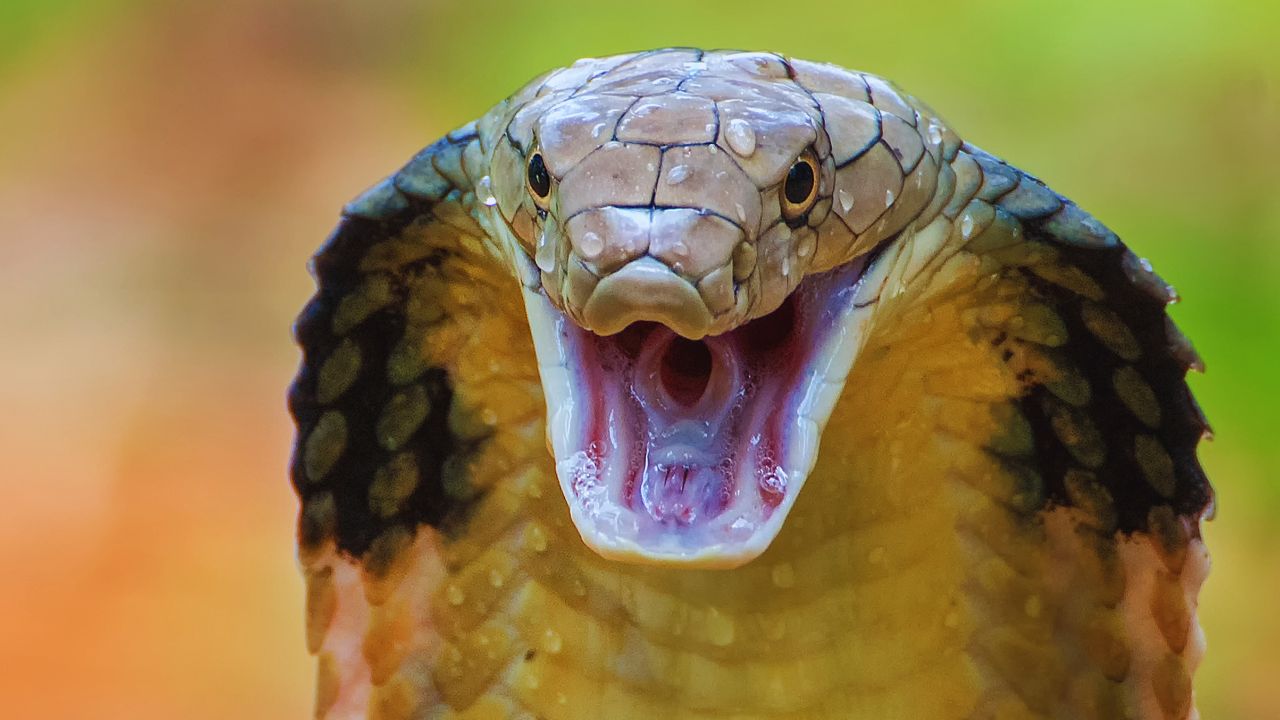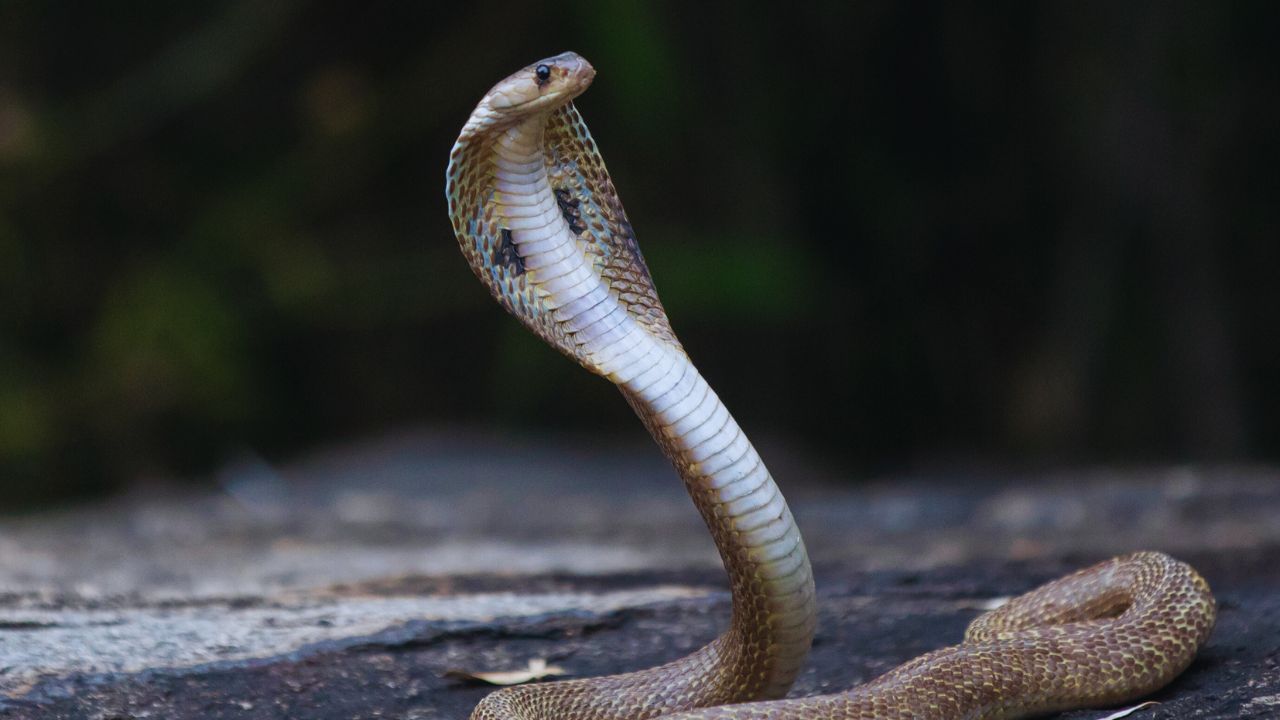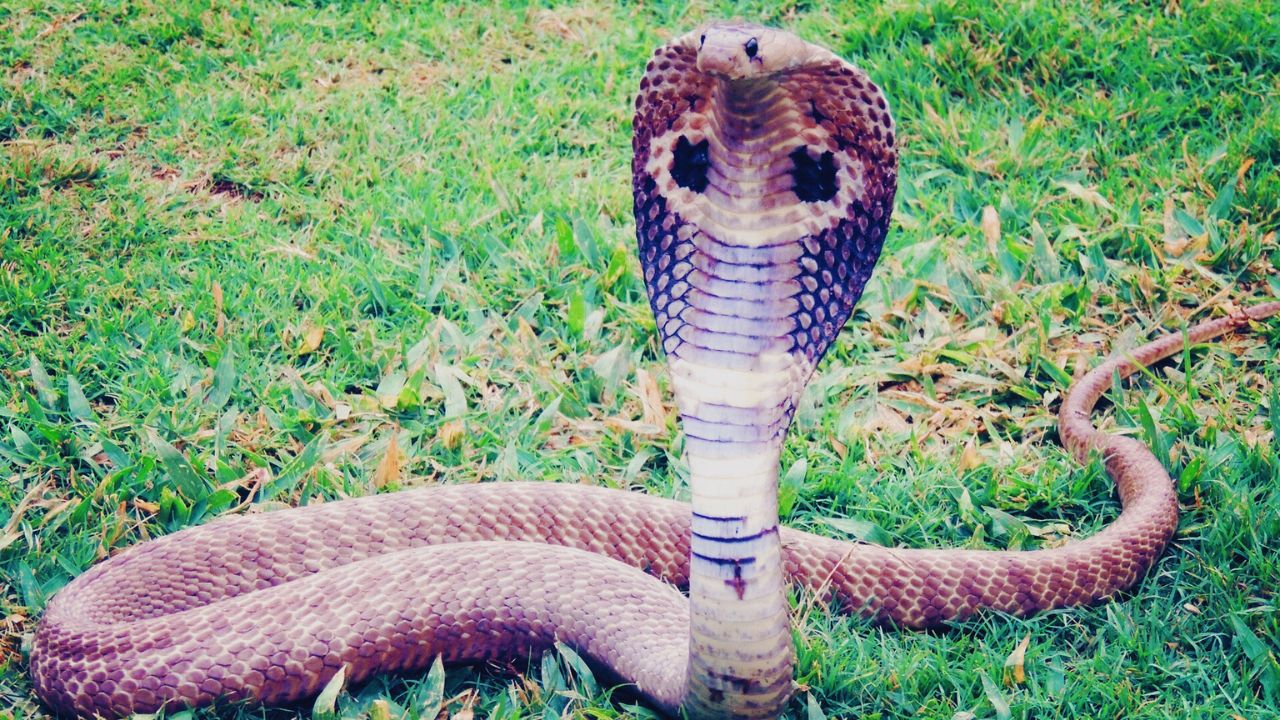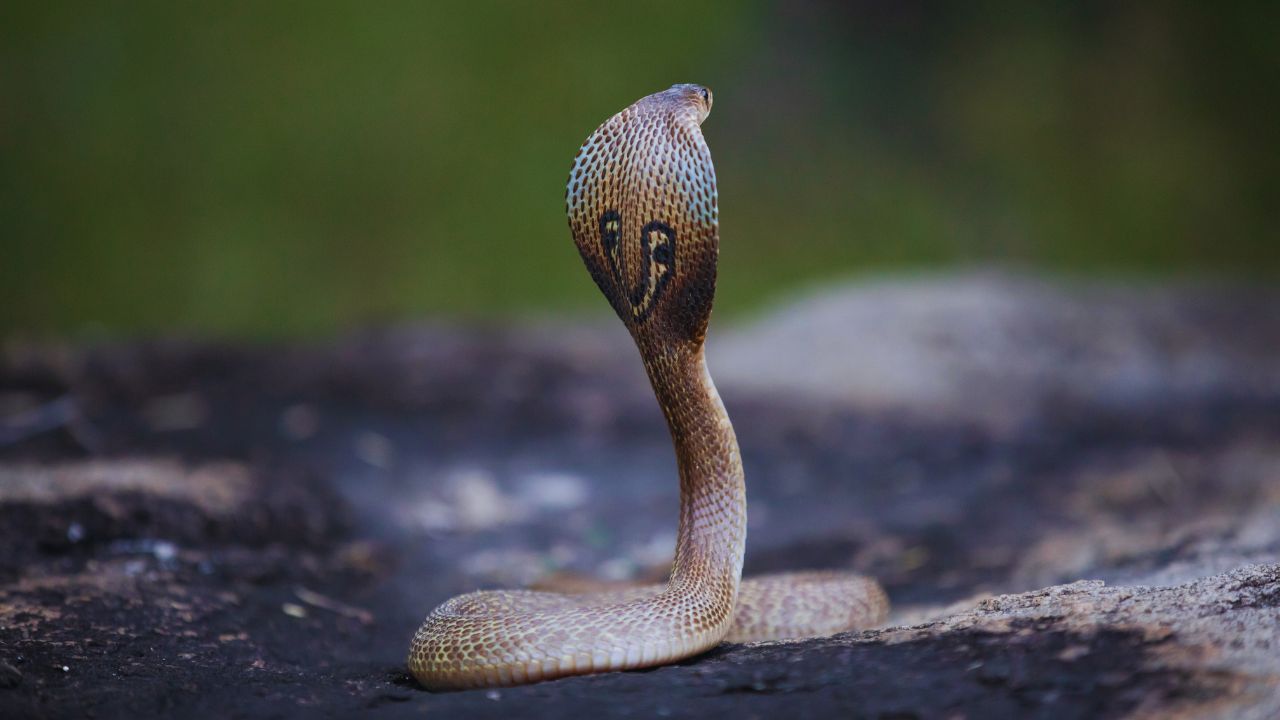The poisonous Philippine cobra, or Naja philippinensis, as it is formally named, is unique to the Philippine islands. Ranked among the world’s most poisonous snakes, the Philippine cobra is well-known for its strong venom and capacity to spit as a defensive measure. This species, which is mostly found in the Philippines’ northern areas, has drawn notice for its unusual traits and very poisonous venom.

Physical attributes
The Philippine cobra is a medium-sized snake that usually grows to a length of 3 to 5 feet; however, some may go a little longer. The snake is mostly light brown in color, with dark brown markings that serve to enhance its natural appearance. The snake has a thick body and a recognizable head that is somewhat wider than its neck—a trait shared by most cobra species. Its round, dark brown eyes contribute to its frightening aspect.
Spitting is one of the most amazing features of the Philippine cobra. This particular kind of cobra is able to spit its venom rather accurately, aiming it directly at any possible threat’s eyes, unlike some other cobra species that sting. Even at a distance, the venom may be released up to 10 feet away, making it a dangerous foe. Since the venom is neurotoxic, it mostly affects the neurological system, which may result in paralysis and, in the worst-case scenario, possibly deadly respiratory failure.
Distribution and Habitat
The northern parts of the Philippines, which include the islands of Luzon, Mindoro, Catanduanes, and Masbate, are home to the Philippine cobra. Typically, these snakes may be found in meadows, low-lying plains, forests, and even close to populated areas. They are often seen close to ponds, rivers, and other sources of water because they have a special love for the water. Philippine cobras are known to be aggressive; however, they really shy away from people and would only strike if they felt threatened.

Nutrition and Predation
The main foods that the Philippine cobra eats include rodents, small animals, frogs, and other snakes. These snakes, however, are opportunistic feeders, which means they will consume any available food, including eggs and tiny birds. Philippine cobras have predators of their own, even though they are top predators in their ecology. The biggest danger to these snakes is humans, although they are also eaten by mongooses, raptors, and even other snakes like king cobras.
Philippine Cobra Facts
Life Cycle and Reproduction
The female Philippine cobra normally lays 12 to 20 eggs in a clutch during reproduction. The eggs are placed in a remote location—often underground—and are allowed to hatch naturally. Snakelets, or baby cobras, are born completely autonomously and without parental care. When they hatch, these snakelets are around 20 inches long and have venom, so they are competent hunters right away.

Origins of Evolution
The Naja genus, which has a wide variety of cobras located in southern Africa, southern Asia, and the islands of Southeast Asia, includes the Philippine cobra as one of its numerous varieties. Only found in the Philippines, the Philippine cobra has developed to fit its particular habitat. It is thought that the species first appeared millions of years ago, and one important adaptation that has helped it survive as a predator is its poisonous nature.
Status of Conservation
The International Union for Conservation of Nature has classified the Philippine cobra as Near Threatened (IUCN). This species’ population is thought to be decreasing as a result of habitat loss, human encroachment, and persecution. Philippine cobras are very poisonous, but they are also very important to the ecology because they regulate the number of small animals and other prey species.
Safety and Human Interaction
Humans may die from the venom of the Philippine cobra in as little as thirty minutes if treatment is not received. Paralysis and respiratory failure result from the venom’s effects on the respiratory system. It is imperative that anybody bitten by this snake get emergency medical assistance. Philippine cobras are not naturally hostile to people and will only strike if they feel threatened, despite their deadly capability.

It is extremely urged that people stay away from touching or coming in close proximity to these snakes due to their hazardous nature. They should not be kept as pets, and their proximity to populated areas should be handled carefully. Raising people’s knowledge and understanding of the Philippine cobra might lessen unneeded interactions and encourage cohabitation between people and these amazing reptiles.
Philippine Cobra Physical Characteristics
Comparable Species
The Philippine cobra belongs to a larger family of poisonous snakes that also includes species such as the Egyptian, Javan spitting, Indian, and monocled cobras. Though each of these species is distinct in its own right, they are all capable of biting someone to death and are very poisonous.
The Philippine cobra is a fascinating and deadly snake that is essential to the islands’ biodiversity. It is one of the most feared snakes in the world because of its strong venom and ability to spit. In order to preserve this species’ ability to flourish in its native environment and to keep human populations safe from harm, conservation activities are essential.

FAQs (Frequently Asked Questions) about Philippine Cobra
Philippine cobras hunt in what ways?
These snakes hunt mostly during the day, using their tongues to taste the air and find possible prey.
How is a person killed by a Philippine cobra?
When this cobra bites, its venom may kill up to 20 people at once.
Which Philippine cobra is the deadliest?
Its venom is among the strongest of any cobra species, according to toxicity tests.
Is there venom in the Philippine cobra?
Indeed. It is among the world’s most poisonous cobras, belonging to the phylum Chordata.
How deadly can a Philippine cobra be?
The poisonous Philippine cobra poses a serious threat. It is one of just 14 species of cobras that really seems to spit at danger. This snake is among the most dangerous in the world, according to research, and its venom may kill a person in as little as 30 minutes.
Where can one find a Philippine cobra?
This cobra is mostly found in the Philippines, namely in Luzon, Mindoro, Catanduanes, and Masbate, as its name implies.
Philippine cobras consume what?
This cobra usually feeds on frogs, small animals, and other snakes. Although they will devour other species’ eggs, rats are their easiest prey to catch and consume.





